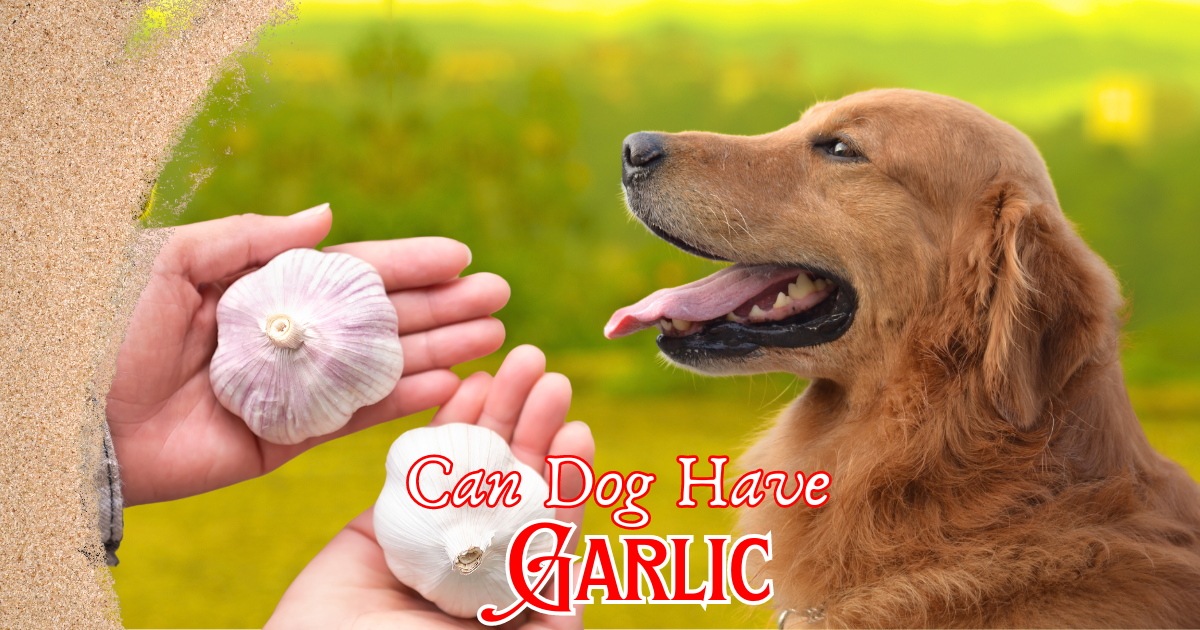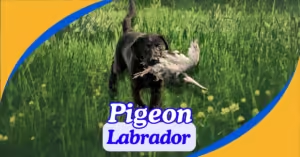As dog owners, we’re often tempted to share our food with our furry friends, but not all human foods are safe for dogs. One ingredient that raises a lot of concern is garlic. It’s commonly used in cooking and is known for its health benefits for humans, but can dogs have garlic? The short answer is no. Garlic is toxic to dogs and can cause serious health problems if ingested, even in small amounts.
In this guide, we’ll explore why garlic is harmful to dogs, the symptoms of garlic poisoning, and what to do if your dog accidentally eats garlic. We’ll also look at the toxic dose of garlic for dogs and offer alternatives that are safe for seasoning your dog’s food. Whether you’re curious about garlic bread or garlic powder, this article will provide everything you need to know about the dangers of garlic for dogs.
1. Can Dogs Have Garlic? The Truth You Need to Know
No, dogs should not have garlic. Garlic is part of the Allium family, which also includes onions, leeks, and chives—plants that are known to be toxic to dogs. Even though garlic has many health benefits for humans, it contains certain compounds that can cause harm to your dog’s health.
The compound that makes garlic dangerous for dogs is thiosulfate. When ingested, thiosulfate damages a dog’s red blood cells, leading to a condition called hemolytic anemia. This condition causes the red blood cells to break down, reducing the oxygen supply throughout the body. The result can be weakness, lethargy, and other symptoms that can worsen over time.
The level of toxicity in garlic is higher than in onions, meaning even small amounts of garlic can pose serious health risks to dogs. Some dog owners may have heard that garlic is safe in small doses or as part of certain natural remedies, but veterinarians strongly advise against feeding garlic to dogs in any form—raw, cooked, powdered, or in supplements.
Even foods that contain garlic as a seasoning, such as garlic bread or garlic-flavored treats, should be avoided to protect your dog from potential poisoning. While garlic is a flavorful addition to many human meals, it’s best to keep this ingredient out of your dog’s diet altogether.
2. Why Is Garlic Toxic to Dogs? Understanding the Risks
Garlic contains thiosulfates, a compound that is highly toxic to dogs. When consumed, thiosulfates affect the red blood cells by damaging their ability to transport oxygen, leading to hemolytic anemia. This condition occurs when the red blood cells break down faster than they can be replaced, reducing the amount of oxygen circulating through the body.
Here’s a breakdown of the risks associated with garlic:
- Hemolytic anemia: The primary danger of garlic toxicity is its ability to destroy red blood cells. As the cells break down, the dog’s body struggles to maintain normal oxygen levels, leading to symptoms like fatigue, weakness, and difficulty breathing.
- Gastrointestinal upset: Dogs that ingest garlic may experience vomiting, diarrhea, and abdominal pain due to irritation of the digestive system.
- Delayed toxicity: Garlic poisoning is not always immediate. In some cases, the symptoms may take a few days to appear after ingestion. This delayed onset can make it harder for pet owners to connect the symptoms to the garlic consumption, leading to delayed treatment.
- Cumulative effect: Even small amounts of garlic can add up over time. If a dog consumes small quantities of garlic regularly, it can eventually lead to a toxic build-up in their system, resulting in serious health issues.
The unique chemical makeup of garlic makes it especially harmful to dogs. Even if your dog does not show immediate signs of distress, garlic can still cause damage to their internal systems over time. This is why it’s crucial to avoid giving dogs any form of garlic, no matter how small the amount.
3. What Happens If a Dog Eats Garlic? Signs and Symptoms of Garlic Poisoning
If your dog eats garlic, it’s important to monitor them closely for any signs of garlic poisoning. Symptoms can vary depending on the amount of garlic consumed and your dog’s size, but here are the most common symptoms of garlic toxicity in dogs:
- Vomiting and diarrhea: These are some of the earliest symptoms and can occur shortly after ingestion. The dog may show signs of gastrointestinal discomfort such as nausea or excessive drooling.
- Lethargy and weakness: As garlic damages the red blood cells, dogs may become extremely tired and weak. They may appear listless, have difficulty standing or walking, and show a lack of interest in normal activities.
- Pale gums: Healthy gums are pink, but if your dog’s gums are pale, this could be a sign of anemia, indicating that garlic is interfering with their red blood cell count.
- Increased heart rate and breathing difficulties: As hemolytic anemia progresses, the dog’s body tries to compensate for the lack of oxygen by increasing the heart rate and breathing. If your dog is panting heavily or seems short of breath, it could be a serious sign of garlic poisoning.
- Jaundice: In severe cases, garlic poisoning can cause jaundice, where the dog’s skin or the whites of their eyes turn yellow. This happens because of liver damage caused by the breakdown of red blood cells.
If you notice any of these symptoms, it’s important to contact your veterinarian immediately. Garlic poisoning can worsen over time, and prompt medical treatment is essential to prevent serious complications.
4. Can Dogs Eat Garlic Bread or Other Foods Containing Garlic?
Garlic bread and other foods containing garlic, whether raw, cooked, or powdered, should be avoided when it comes to your dog’s diet. Even though garlic bread may seem harmless, it contains garlic in amounts that could still harm your dog. The combination of garlic, butter, and bread offers no nutritional benefits and poses unnecessary risks to your dog’s health.
Here’s why you should avoid giving your dog foods with garlic:
- Garlic bread: While delicious for humans, garlic bread is a dangerous snack for dogs. The garlic used to flavor the bread, whether in powder form or fresh, is toxic to dogs. Additionally, garlic bread often contains butter and fats, which can lead to pancreatitis in dogs.
- Garlic powder: Many processed foods contain garlic powder, a concentrated form of garlic that is even more potent than fresh garlic. Garlic powder is often used in seasoning mixes, so be cautious of foods like chips, crackers, or certain meats that may have been seasoned with garlic.
- Cooked or raw garlic: Whether raw or cooked, garlic retains its toxic properties. Cooking garlic does not make it safe for dogs, and even small amounts in a dish can lead to garlic poisoning.
The safest approach is to avoid feeding your dog any foods that contain garlic or are seasoned with garlic-based products. Instead, opt for dog-friendly snacks and meals that won’t put your dog’s health at risk.
Want to know more about what human foods are safe for dogs? Check out 5 Must-Know Facts about Avocados for Dogs and keep your pup safe here!
5. How Much Garlic is Toxic to Dogs? Understanding Garlic Poisoning Levels
Garlic toxicity in dogs depends on the amount consumed and the size of the dog. Even small amounts can be harmful, but larger doses pose a much greater risk. The general rule is that ingestion of 15 to 30 grams of garlic per kilogram of body weight can lead to garlic toxicity in dogs. This translates to around one clove of garlic per 10 pounds of body weight being enough to cause noticeable symptoms of garlic poisoning.
- Small dogs: Smaller dogs are at a higher risk because even a small amount of garlic can quickly reach toxic levels. For instance, a small breed dog that weighs 10-20 pounds may experience symptoms after consuming just one clove of garlic.
- Larger dogs: While larger dogs may be more resistant to small amounts of garlic, it’s still dangerous to allow them to consume any form of garlic. The cumulative effect of consuming garlic over time can lead to significant health problems.
- Garlic supplements: Some natural health enthusiasts promote garlic supplements for dogs, believing that garlic can help repel fleas or improve immune function. However, veterinary professionals strongly advise against the use of garlic supplements, as there is no scientifically proven benefit, and the risks far outweigh any potential positives.
Given the high toxicity of garlic, it’s crucial to avoid feeding any amount of garlic to your dog. If your dog accidentally consumes garlic, it’s important to act quickly and seek veterinary attention.
Conclusion
While garlic may offer health benefits for humans, it’s highly toxic to dogs and should be avoided in all forms. Can dogs have garlic? The answer is no. Even small amounts of garlic can lead to garlic poisoning, causing serious health issues such as hemolytic anemia, gastrointestinal upset, and weakness.
If your dog consumes garlic, it’s essential to act quickly, monitor for symptoms, and contact your veterinarian for advice. While garlic may seem harmless, its risks far outweigh any potential benefits, and it’s always best to keep this ingredient out of your dog’s diet.
Instead, consider using dog-safe alternatives like parsley, turmeric, or basil to flavor your dog’s meals. By staying informed and avoiding harmful foods like garlic, you can keep your dog healthy, happy, and safe.
FAQs About Dogs and Garlic
- Can dogs eat garlic?
No, dogs should not eat garlic. Garlic is toxic to dogs and can lead to serious health issues such as hemolytic anemia, which damages their red blood cells. - Why is garlic toxic to dogs?
Garlic contains thiosulfates, which are toxic to dogs. These compounds damage red blood cells, leading to anemia. Even a small amount of garlic can cause significant harm to your dog’s health. - What happens if my dog eats garlic?
If your dog eats garlic, they may experience symptoms such as vomiting, diarrhea, weakness, pale gums, and lethargy. In severe cases, garlic poisoning can lead to serious complications like breathing difficulties and anemia. - How much garlic is toxic to dogs?
Even a small amount of garlic can be harmful. Approximately 15 to 30 grams of garlic per kilogram of body weight can cause garlic toxicity. This means that even one clove of garlic can be dangerous for small dogs. - Can dogs eat garlic bread?
No, dogs should not eat garlic bread. While it may seem less harmful than raw garlic, garlic bread still contains garlic, which is toxic to dogs. Additionally, the fats and butter in garlic bread can cause digestive issues like pancreatitis. - Are garlic supplements safe for dogs?
No, garlic supplements are not safe for dogs. Despite claims that garlic can repel fleas, the risks of garlic poisoning far outweigh any potential benefits. Always consult your vet before giving any supplements to your dog. - What should I do if my dog eats garlic?
If your dog eats garlic, monitor them for symptoms of garlic poisoning such as vomiting, lethargy, and pale gums. Contact your veterinarian immediately for guidance and treatment options. - How long does it take for garlic poisoning symptoms to show?
Garlic poisoning symptoms may take a few hours to a few days to appear. Symptoms like vomiting, diarrhea, and lethargy can occur shortly after ingestion, but hemolytic anemia and other serious effects may take longer to manifest. - Can garlic have long-term effects on dogs?
Yes, if left untreated, garlic poisoning can cause long-term damage to a dog’s red blood cells, leading to chronic anemia. This condition can reduce their ability to transport oxygen throughout the body, leading to serious health issues. - What are safe alternatives to garlic for dogs?
Instead of garlic, you can use dog-safe herbs like parsley, basil, turmeric, or oregano to flavor your dog’s food. These herbs are safe for dogs and offer some health benefits without the risks associated with garlic.

Joseph Bush is a seasoned writer and researcher with over 7 years of experience covering a wide range of general topics, from lifestyle and technology to business and current events. He is dedicated to producing fact-checked, reader-friendly content that informs, engages, and empowers readers.
Throughout his career, Joseph has followed strict editorial guidelines, relied on reputable sources, and ensured every article meets the highest standards of accuracy and clarity. His expertise spans multiple fields, allowing him to explain complex topics in a way that’s easy to understand.
Passionate about continuous learning, Joseph stays updated on industry trends and best practices to deliver trustworthy, well-rounded insights. Readers can rely on his work for its credibility, depth, and real-world relevance.




